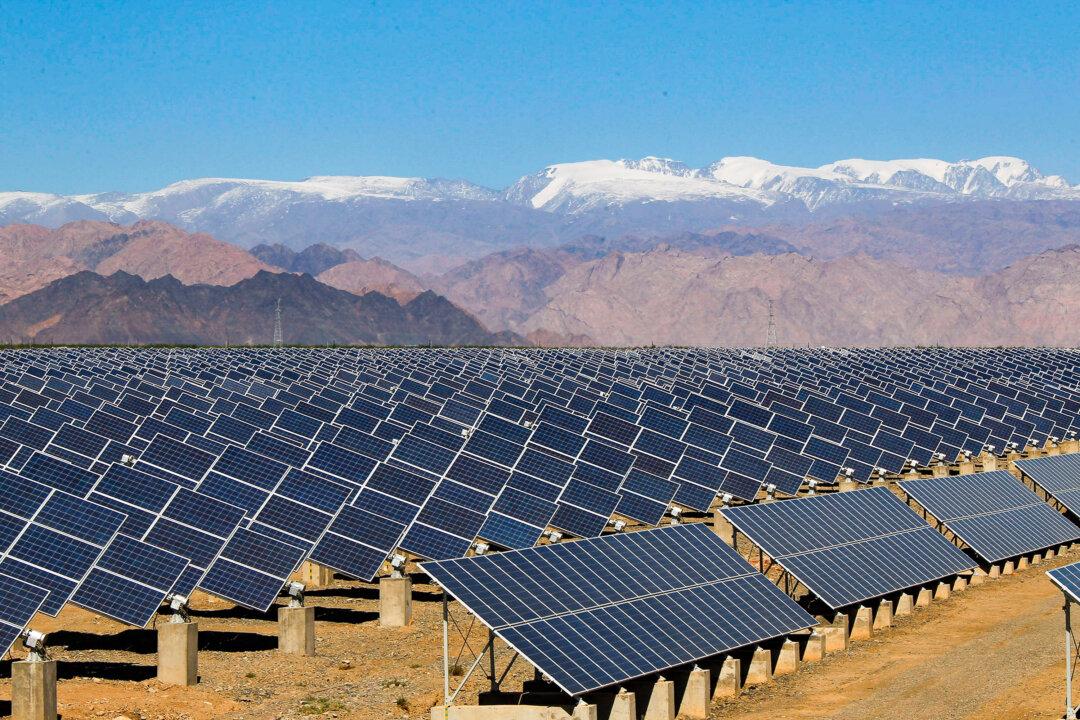Commentary
Some of China’s solar inverters in the United States can be controlled from China via rogue communications equipment, according to U.S. officials cited by Reuters on May 14. Some large batteries from China have unexplained cellular radios, according to the officials.
PV Tech, a solar trade publication, noted that “hackers could remotely disrupt or switch off solar power supply if they could control the inverter, resulting in power losses, blackouts or damage to energy infrastructure.”
The risk is real—and global. In November, some inverters in the United States were, in fact, disabled from China.
China is the world’s largest exporter of power inverters, which connect renewable energy sources to electric power grids. The inverters are considered the “brains” of devices such as solar panels, wind turbines, heat pumps, and electric vehicle chargers.
The rogue devices are “undocumented communication channels that could allow firewalls to be circumvented remotely, with potentially catastrophic consequences,” according to the sources cited by Reuters. Malicious tampering of them in a coordinated manner poses the risk of widespread blackouts and damage across the U.S. and European electric grids.
At the whim of a dictator in Beijing, or for something more serious like a war over Taiwan, Chinese regime hackers could use the rogue devices to skirt cybersecurity firewalls, communicate back to China, and take down larger portions of U.S. and allied electrical grids. “Beijing blackouts” could be simultaneous and widespread. This would make it difficult for the United States and allies to mount the kind of rapid defense necessary to defend far-flung territories.
The regime could also use the threat of hacking the grid for blackmail against the U.S. and European governments. Kaupo Rosin, Estonia’s chief of intelligence, said the country risks blackmail by China, unless China’s technology is banned in key parts of the economy, including solar inverters.
The U.S. and allies have therefore been increasingly careful about allowing the purchase of utility-scale Chinese electronics. But even home solar inverters are a risk. If just 1 percent of Europe’s 338 gigawatts of installed solar power capacity were hacked by the regime in Beijing, widespread and prolonged blackouts could result. That shouldn’t be hard for the regime to do, as about 200 GW, or almost 60 percent, of Europe’s solar capacity is linked to inverters manufactured in China.
The European Solar Manufacturing Council (ESMC) was quoted in PV Tech saying that the security risk from China’s inverters is “systemic.” The ESMC called on the European Commission to investigate the “risk potential for sabotage and espionage” of high-risk manufacturers from China.
PV Tech interviewed a leading European inverter manufacturer who said that “it’s very clear inverter companies could switch off the grid if they want to.” He noted that “Probably 99% of people would have said ‘No, there’s no risk [of Russia restricting gas supply to Europe after the Ukraine invasion].’ But it did. We saw it. And I see the same risk here.”
The United States has worked hard to reduce vulnerabilities to China’s telecom and semiconductor technologies, as well as the products of forced labor. However, similar U.S. laws to mitigate the risk from inverters are absent.
A new U.S. bill, called the Decoupling from Foreign Adversarial Battery Dependence Act, would at least ban the Department of Homeland Security from buying some Chinese batteries. The bill targets six companies that are allegedly closely linked to the Chinese Communist Party (CCP). They are BYD Company, Contemporary Amperex Technology Company, Envision Energy, EVE Energy Company, Gotion High-tech Company, and Hithium Energy Storage Technology Company. That ban would start in October 2027.
Huawei, Ginlong Solis, and Sungrow are also allegedly linked to the CCP and export large numbers of converters. Huawei has alleged links to Chinese intelligence and state security services, and produced 29 percent of global inverter shipments in 2022.
But the bill has been sitting in the Senate Committee on Homeland Security and Governmental Affairs since March 11. And it only applies to the Department of Homeland Security. Why not make its applicability general? And why limit the ban to just six companies from China?
We know from other whack-a-mole laws that they typically fail. Company names and addresses in China can and will be changed in response, with no change to the underlying technology or manufacturing processes. Bans on China’s technologies in U.S. energy grids, and elsewhere in the United States, should be as general as possible.
Former Secretary of Defense Donald Rumsfeld famously said that we “know there are known unknowns; that is to say, we know there are some things we do not know. But there are also unknown unknowns—the ones we don’t know we don’t know.” When what we don’t know are threats to U.S. national security, we have to implement broad and layered defenses. What we do know is that the regime in China is adept at innovating ingenious ways to hobble the United States.
China’s solar inverter Trojan horse demonstrates that it’s time for our leaders in Washington to respond with greater alacrity and foresight, and in more general ways, to protect the United States of America from the CCP threat.





